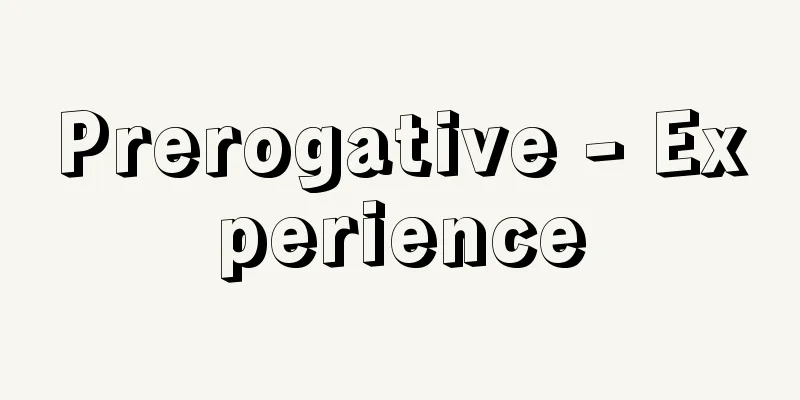Karaoke - Karaoke

|
Karaoke was originally a term in the music industry, meaning "empty orchestra," and was used to refer to tapes or records containing only musical accompaniment for singers practicing or recording. In 1971, karaoke machines aimed at customers of bars and snack bars appeared in Kobe, and by the mid-1970s they had become popular and had spread throughout the country, with the word karaoke becoming widely known. At the time, 8-track audio tapes were the norm for karaoke, and users would sing along while looking at lyrics sheets. In 1982, laser disc (LD) karaoke was released, gaining popularity as "picture karaoke," and the era of karaoke shifted from tape to disk. LD karaoke, in addition to the appeal of the background images displayed on the monitor, made singing even easier than with tapes thanks to the color-changing lyrics captions, which greatly contributed to the expansion of karaoke users. In 1992, online karaoke was introduced. It was a system that used electronic sound sources conforming to the MIDI standard (Musical Instrument Digital Interface, a unified standard for interoperating digital electronic musical instruments) to distribute music data to each terminal device over telephone lines. Compared to laser disc karaoke, it offered an overwhelmingly larger selection of songs and new songs were made available more quickly, which increased the demand for karaoke, especially among young people. In the mid-1990s, the mainstream of karaoke shifted from laser discs to online karaoke. Meanwhile, karaoke boxes, made from ship containers to prevent sound leakage, appeared in Okayama Prefecture in 1986. They became popular because they allowed people to enjoy karaoke easily and at a low cost, and because they allowed people to enjoy karaoke with their friends in a private room without worrying about others, and they spread rapidly throughout the country from the end of the 1980s. The number of stores continued to increase until the mid-1990s, capturing consumer needs for "cheap, close, and short" during the economic downturn following the collapse of the bubble economy. However, in the late 1990s, karaoke boxes became oversupplied and the number of stores started to decrease. The number of bars, snack bars, and other establishments with karaoke also continued to decrease due to the economic downturn. However, there are 12,844 karaoke boxes nationwide, 270,095 bars and snack bars with karaoke, and 15,426 hotels and inns that have introduced karaoke (according to JASRAC as of March 2000). The number of people who participate in karaoke is 50.6 million (Leisure White Paper 2000, 1999). Karaoke is not just a fad, but has become established as a national pastime. Karaoke has also been exported overseas, and in Europe and the United States, pubs that have MCs (music anchors, presenters) to entertain customers with karaoke are popular. Karaoke boxes are also available in Korea, Taiwan, and other countries. KARAOKE is now an international word that is understood overseas. [Yoshinori Tada] Source: Shogakukan Encyclopedia Nipponica About Encyclopedia Nipponica Information | Legend |
|
カラオケは、そもそも音楽業界の用語で、歌手の練習やレコーディング時に使う伴奏だけを録音したテープやレコードを、「空(から)のオーケストラ」の意で、「カラオケ」とよんだ。それが、1971年(昭和46)に神戸市においてバー、スナックの客向けのカラオケ装置が登場、人気を得て70年代中ごろには全国に普及し、カラオケということばが一般に浸透した。 この当時のカラオケは、8トラックのオーディオ・テープが主流で、利用者は歌詞カードを見ながら歌うスタイル。それが、1982年にLD(レーザーディスク)カラオケが登場、「絵の出るカラオケ」として人気を得て、カラオケはテープからディスクの時代となる。LDカラオケは、モニターに映し出される背景映像の魅力に加え、色変わりする歌詞テロップによってテープ時代よりも一段と歌いやすくなり、それがカラオケ利用者の拡大に大きく貢献した。 1992年(平成4)には通信カラオケが登場。MIDI規格(Musical Instrument Digital Interface、デジタル方式の電子楽器を相互連動させるための統一規格)の電子音源を使い楽曲データを電話回線で各端末機に配信するシステムで、LDカラオケに比べ圧倒的に豊富な曲数と新曲提供の早さを実現し、とくに若者層のカラオケ需要を拡大した。90年代中ごろには、カラオケの主流はLDから通信に移った。 一方、1986年に、岡山県において音もれのしにくい船舶用コンテナを利用したカラオケボックスが登場、手軽に低料金でカラオケが楽しめるとともに、個室内で他人を気にせず仲間だけで楽しめるという要素も相まって人気を博し、80年代末ごろから全国に急速に普及した。バブル経済崩壊後の景気後退下の消費ニーズ「安・近・短」をとらえ、90年代中ごろまで店舗数の拡大が続いた。 ただ、1990年代後半になると、カラオケボックスは供給過剰となり店舗数は減少に転じる。また、バー、スナックなどのカラオケ設置店も景気低迷の影響から減少傾向が続く。とはいえ、全国にカラオケボックスは1万2844店、カラオケ設置のバー、スナックなどは27万0095店、カラオケ導入のホテル・旅館等は1万5426軒(2000年3月、JASRAC調べ)あり、またカラオケの参加人口も5060万人(1999年、『レジャー白書2000』)にのぼっており、カラオケはたんなるブームではなく国民的娯楽として定着している。また、カラオケは海外にも輸出されており、欧米ではMC(ミュージック・キャスター、司会者)を置いて客にカラオケを楽しませるパブなどが人気を得ている。韓国や台湾等にはカラオケボックスの業態もある。KARAOKEは、現在では海外でも通じる国際語になっている。 [多田義則] 出典 小学館 日本大百科全書(ニッポニカ)日本大百科全書(ニッポニカ)について 情報 | 凡例 |
Recommend
Tatara (flute) - Tatara
A representative ancient Japanese iron-making meth...
Esan [Hot Spring] - Esan
...In 1846 (Koka 3), an eruption accompanied by m...
Pitcairnioideae
...The Bromeliaceae family is divided into three ...
Yaesu Book Center - Yaesu Book Center
This large bookstore opened in front of the Yaesu ...
rotary snow-plow
...railroad vehicles used for clearing snow from ...
Salt damage
Damage to crops, buildings, and facilities caused...
European Broadcasting Union
The European Broadcasting Union (EBU) was establi...
Gosudarstvennyi ordena Lenina akademicheskii Bol'shoi teatr SSSR
…Premiere: Mozart's Don Giovanni, September 2...
Koga Itsaku - Koga Issaku
Electrical communication engineer. Known for his ...
Guest room - kyakkashiki
〘 noun 〙 A room for entertaining guests. A guest r...
Rengeji Temple Death Register - Rengeji Temple Death Register
A register of the deaths owned by Rengeji Temple i...
Disc clutch - Endless clutch
A clutch is a type of friction clutch that uses on...
Pipistrellus endoi (English spelling)
…[Yoshiyuki Mizuko]. . . *Some of the terminology...
Symptom complex
…After serving as a private lecturer at the Unive...
Wartime Education Order
This was an education order to prepare for the fi...









